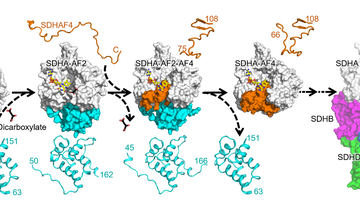
Central Effects of Neurod1 Knockout in Inner Ear
Hearing depends on extracting frequency, intensity, and temporal properties from sound to generate an auditory map for acoustical signal processing. How physiology intersects with molecular specification to fine tune the developing properties of the auditory system that enable these aspects remains unclear.
We made a novel conditional deletion model that eliminates the transcription factor NEUROD1 exclusively in the ear. These mice (both sexes) develop a truncated frequency range with no neuroanatomically recognizable mapping of spiral ganglion neurons onto distinct locations in the cochlea nor a cochleotopic map presenting topographically discrete projections to the cochlear nuclei.
The disorganized primary cochleotopic map alters tuning properties of the inferior colliculus units, which display abnormal frequency, intensity, and temporal sound coding. At the behavioral level, animals show alterations in the acoustic startle response, consistent with altered neuroanatomical and physiological properties. We demonstrate that absence of the primary afferent topology during embryonic development leads to dysfunctional tonotopy of the auditory system. Such effects have never been investigated in other sensory systems because of the lack of comparable single gene mutation models.
Paper
Iva Macova, Kateryna Pysanenko, Tetyana Chumak, Martina Dvorakova, Romana Bohuslavova, Josef Syka, Bernd Fritzsch and Gabriela Pavlinkova. Neurod1 Is Essential for the Primary Tonotopic Organization and Related Auditory Information Processing in the Midbrain. Journal of Neuroscience 6 February 2019, 39 (6) 984-1004; DOI: https://doi.org/10.1523/JNEUROSCI.2557-18.2018.
Website of Laboratory of Molecular Pathogenetics
Title page of the Journal of Neuroscience with article of dr. Pavlínková













